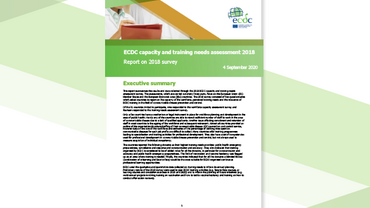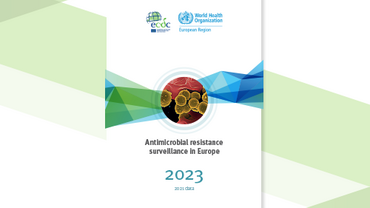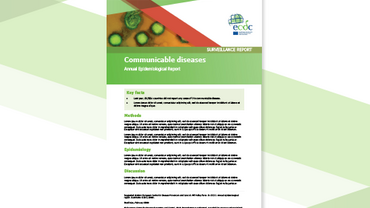Surveillance of healthcare-associated infections in Europe 2007
Each year in the European Union, approximately 4 million patients acquire an infection in hospital and approximately 37 000 of them die as a direct result. The most common types of infection are urinary tract infections, pneumonia, surgical site infections, bloodstream infections and gastro-intestinal infections.The primary aim of this report is to present the results of the 2007 surveillance of surgical site infections (with follow-up data until December 2008) and ICU-acquired infections (with ICU stays until March 2008), and to compare these data with those obtained from 2004 until 2006.
Executive summary
Healthcare-associated infections (HAI) are infections that occur after exposure to healthcare. Each year 4 million patients acquire a healthcare-associated infection in the European Union and about 37 000 of them die as the direct consequence of the infection. The most frequent types of HAI are surgical site infections, urinary tract infections, pneumonia, bloodstream infections and gastrointestinal infections.
The HAI-Net report Surveillance of healthcare-associated infections in Europe, 2007 is the first report of the Healthcare-Associated Infections surveillance Network (HAI-Net) after the transition of Improving Patient Safety in Europe Network (IPSE) to ECDC. It includes data on surgical site infections and on HAI in intensive care units in Europe.
A second HAI-Net report presents an update of the results of Surveillance of surgical site infections in Europe, 2008–2009, as well as the trend analysis for 2006–2009. ECDC also publishes the HAI-Net protocol for surveillance of surgical site infections in European hospitals. The main objective of this protocol is to ensure standardisation of definitions, of data collection and of reporting procedures for hospitals participating in the national/regional surveillance of surgical site infections SSI across Europe.
ECDC is fully committed to support the Member States in their efforts to set up national networks for surveillance of HAI, in particular by providing technical support including on-demand country visits, and organising training courses on HAI surveillance.






